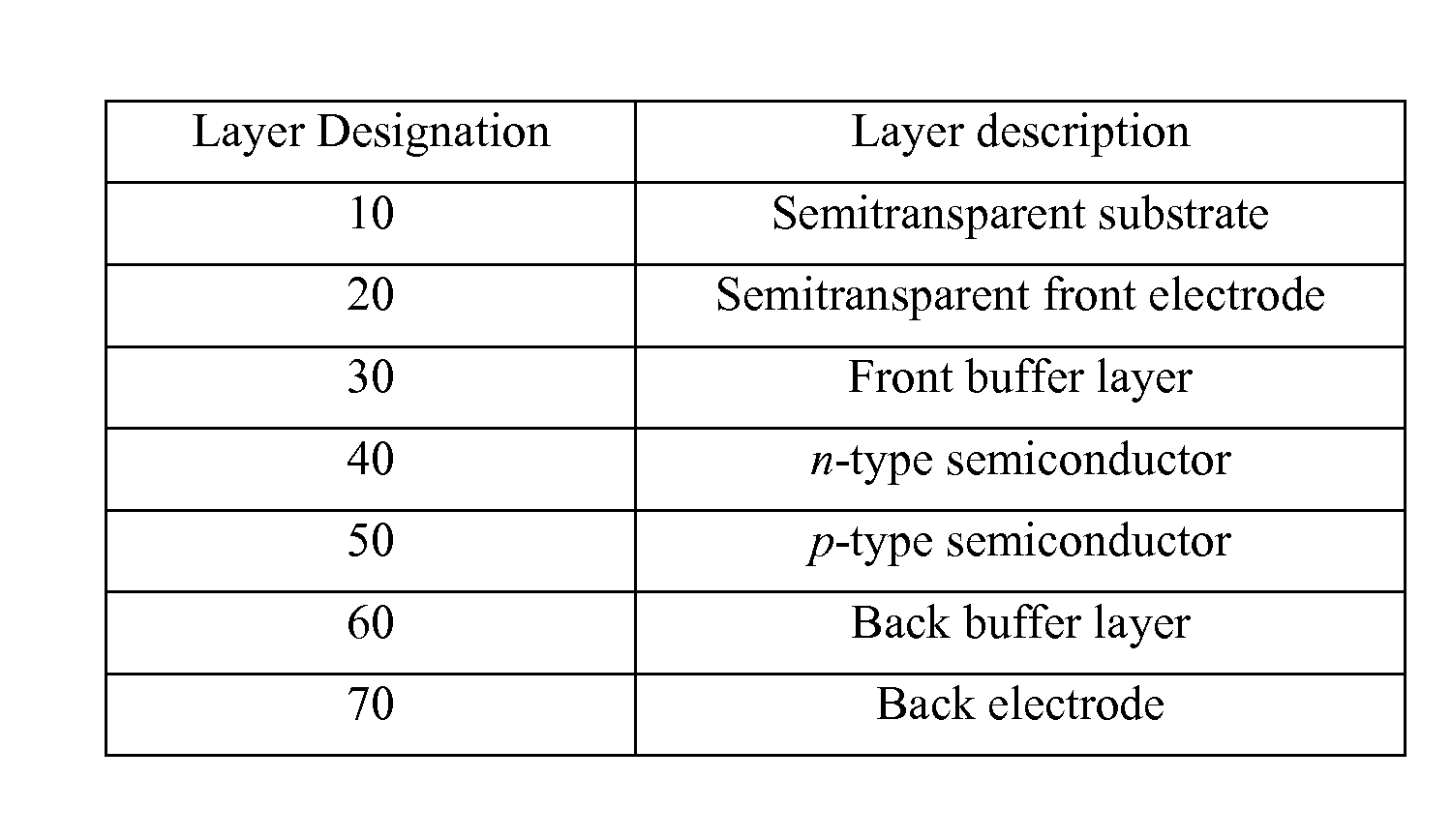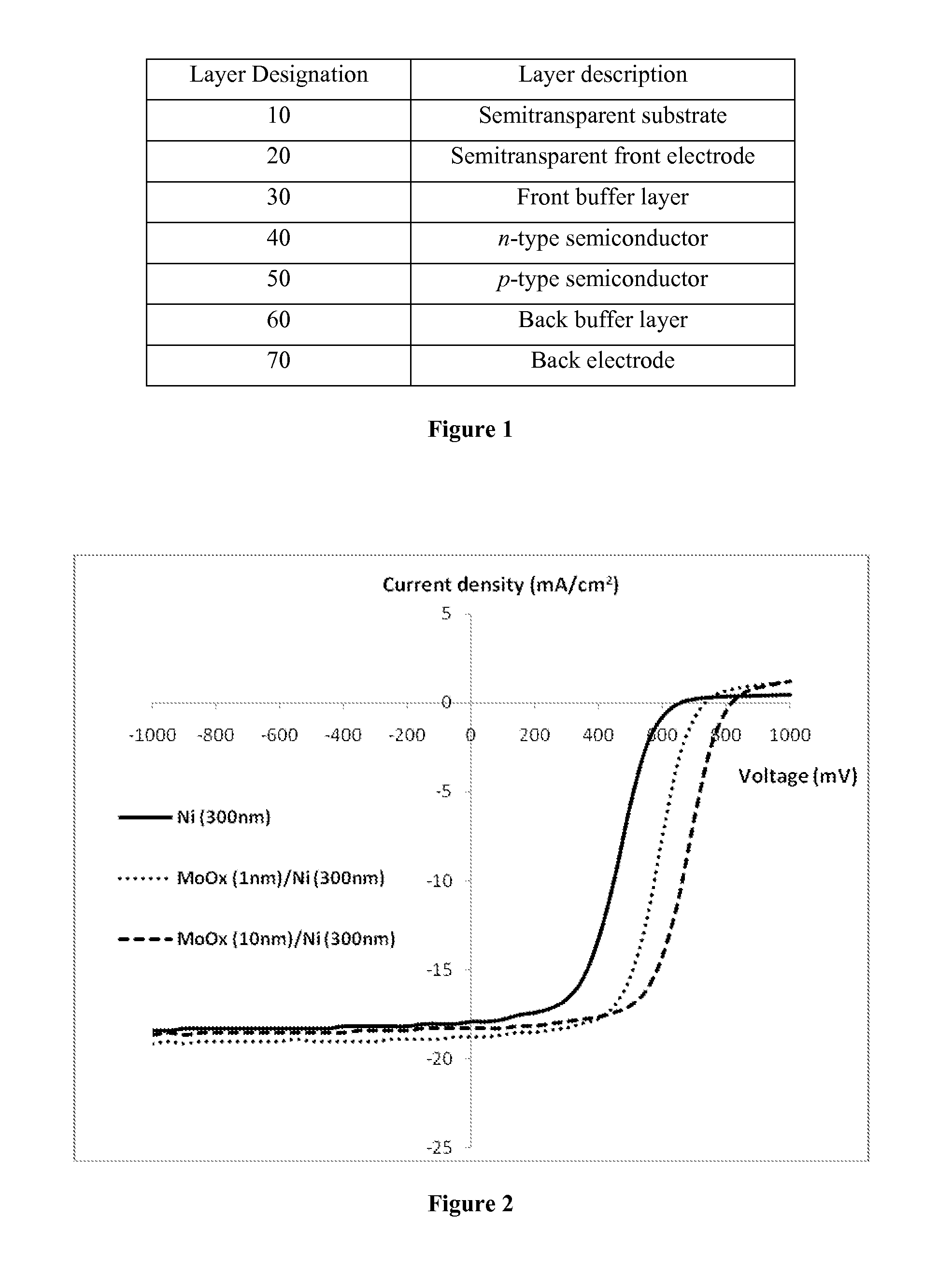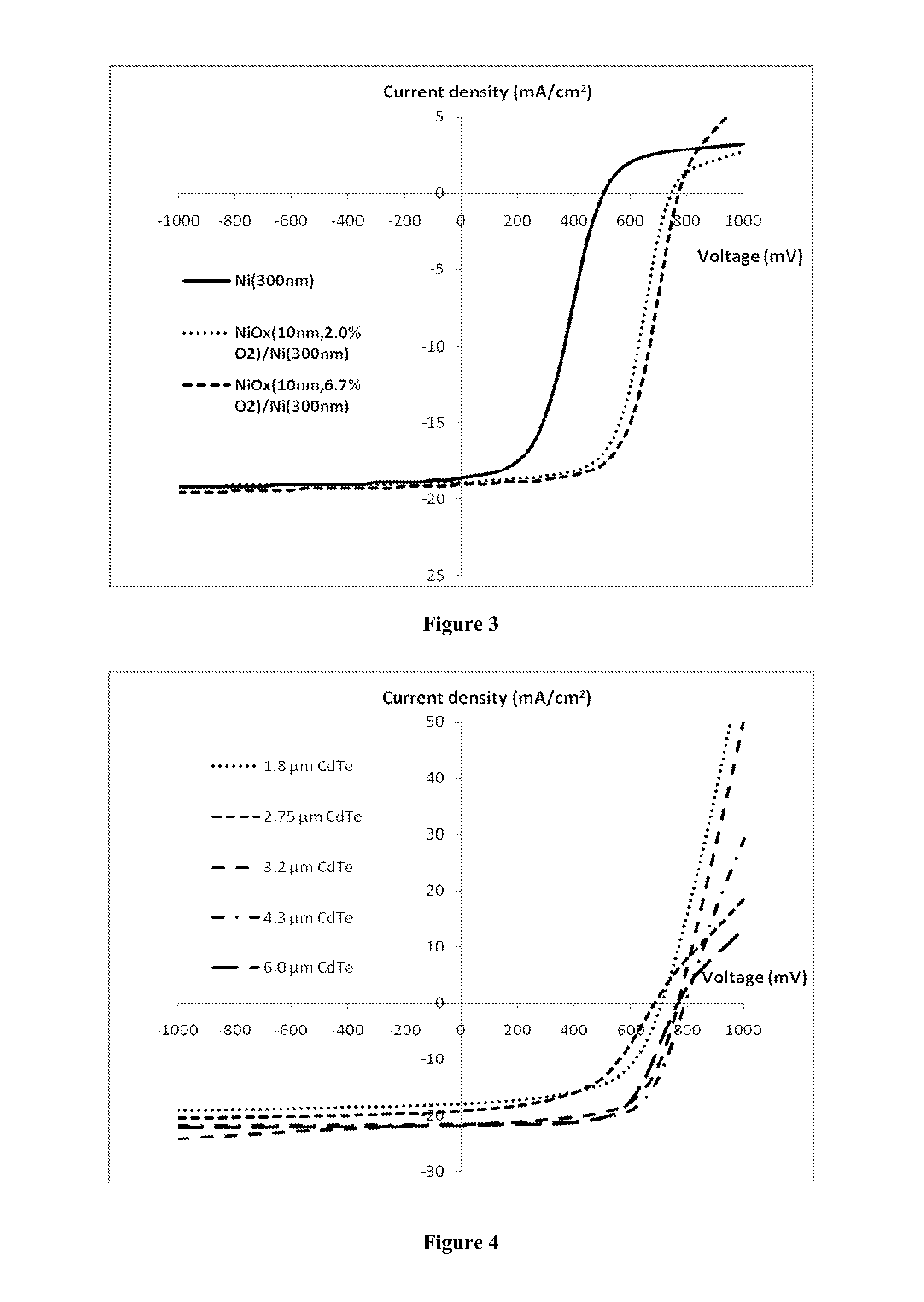Photovoltaic Cells With Improved Electrical Contact
a photovoltaic cell and electrical contact technology, applied in the direction of basic electric elements, electrical apparatus, semiconductor devices, etc., can solve the problems of inefficiency, process interruption, and inutility of metal/p-cdte contacts in cell fabrication, and achieve low-resistance contact, improved contact properties, and high efficiency
- Summary
- Abstract
- Description
- Claims
- Application Information
AI Technical Summary
Benefits of technology
Problems solved by technology
Method used
Image
Examples
example 1
Comparison of Photovoltaic Cells Fabricated with and without a Back Buffer Layer
[0054]CdS / CdTe photovoltaic cells were prepared using a process described as follows. Commercially available soda lime glass with SnO2:F coating was used as the substrate. A layer of CdS film was deposited on top of the substrate using chemical bath deposition method as described by Chu et al. in “Solution-Grown Cadmium Sulfide Films for Photovoltaic Devices”, Journal of Electrochemical Society, vol. 139, pp. 2443-2446 (1992). CdTe film was deposited on top of CdS using a close-space sublimation method as described by Tyan in “Topics on Thin Film CdS / CdTe Solar Cells”, Solar Cells, vol. 23, pp. 19-29 (1988). Following the CdTe deposition, a cadmium chloride vapor treatment step was performed in a method as described by McCandless et al. in “Optimization of Vapor Post-deposition Processing for Evaporated CdS / CdTe Solar Cells”, Progress in Photovoltaics, vol. 7, pp. 21-30 (1999). After the cadmium chloride...
example 2
Example of Photovoltaic Cells Fabricated with and without a Nickel Oxide, NiOx, Back Buffer Layer
[0057]CdS / CdTe photovoltaic cells were prepared as described in Example 1, except that NiOx was used as the back buffer layer instead of MoOx. The NiOx layer was deposited on top of the p-CdTe layer by reactive sputtering in a mixture of oxygen and argon. FIG. 3 shows the J-V characteristics of a CdS / CdTe reference cell without the NiOx, back buffer layer, a CdS / CdTe cell with 10 nm NiOx deposited in an atmosphere containing 2.0% O2 as the back buffer layer, and a CdS / CdTe cell with 10 nm NiOx deposited in an atmosphere containing 6.7% O2 as the back buffer layer. The performance parameters for these cells are shown in Table 2. It is clear that there are substantial improvements in all performance parameters for cells with a buffer layer of NiOx. The improvement in efficiency over the reference cell is 97% and 109% for cells with two different NiOx buffer layers, respectively.
TABLE 2Devi...
example 3
Control
Back Buffer Layer Produced by NP Treatment
[0058]In this example, the back buffer layer for the CdS / CdTe cell was prepared using the conventional NP treatment. With this treatment, the CdS / CdTe cell was dipped in a mixture of nitric and phosphoric acids for a duration of several tens of seconds to produce a tellurium rich surface on top of the CdTe as the back buffer layer. The back electrode was then applied by vapor deposition to this buffer layer to complete the cell fabrication. FIG. 4 shows the current-voltage characteristics of a series of cells with various CdTe thicknesses from 1.8 to 6.0 μm and a back buffer layer produced by NP treatment.
[0059]Table 3 summarizes the cell performance parameters. It is noted that the VOC, JSC, FF and the overall efficiency are lower for the cells with a thin CdTe layer (2.75 μm and below). Attempts to make cells with a CdTe layer of thickness below 1.8 μm resulted in shorted cells, apparently due to pin-hole formation caused by the sol...
PUM
| Property | Measurement | Unit |
|---|---|---|
| work function | aaaaa | aaaaa |
| temperature | aaaaa | aaaaa |
| thickness | aaaaa | aaaaa |
Abstract
Description
Claims
Application Information
 Login to View More
Login to View More - R&D
- Intellectual Property
- Life Sciences
- Materials
- Tech Scout
- Unparalleled Data Quality
- Higher Quality Content
- 60% Fewer Hallucinations
Browse by: Latest US Patents, China's latest patents, Technical Efficacy Thesaurus, Application Domain, Technology Topic, Popular Technical Reports.
© 2025 PatSnap. All rights reserved.Legal|Privacy policy|Modern Slavery Act Transparency Statement|Sitemap|About US| Contact US: help@patsnap.com



